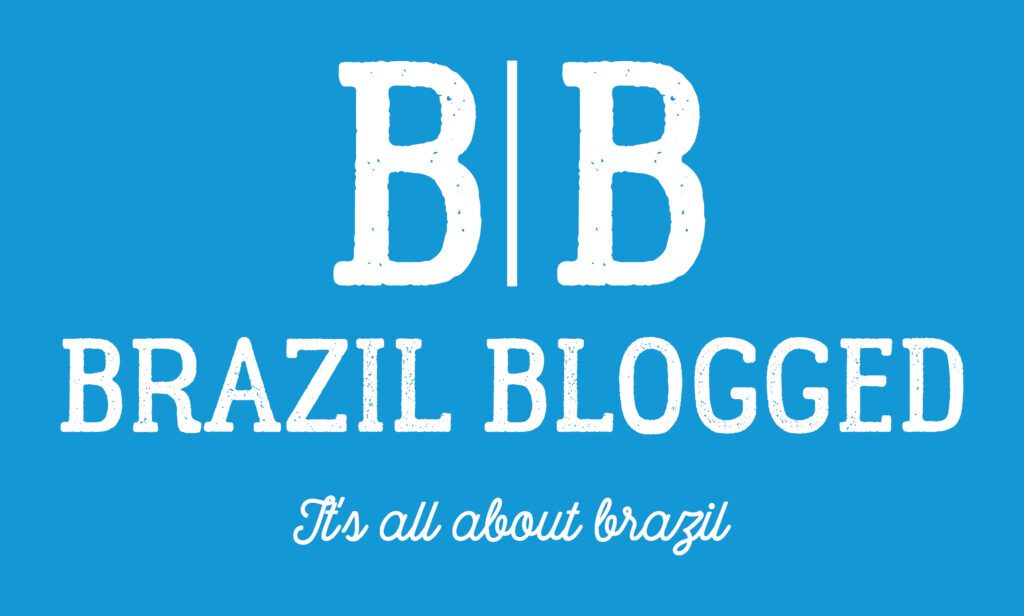The Brazilian Central Bank’s innovative payment system, PIX, has rapidly transformed the financial landscape of Brazil, offering a fast, efficient, and secure method of instant electronic transaction. Launched in November 2020, this system presents a real-time payment solution that operates 24/7, fostering financial inclusion and streamlining transactions for millions of users. With its increasing adoption, PIX has outpaced traditional methods, such as credit cards and cash, to become the most widely utilized payment mechanism within the country.

PIX’s allure is rooted in its ease of use and versatility, allowing individuals and businesses to make and receive payments with just a few clicks through mobile phones, internet banking, or other online channels. The system uses key information like email, phone number, or a unique PIX key to execute transactions, eliminating the need for lengthy bank account details. Moreover, PIX supports Brazil’s digital economy by propelling e-commerce and enhancing the capabilities of businesses to transact swiftly and safely.
Table of Content
ToggleKey Takeaways
- PIX offers real-time, 24/7 payment transactions in Brazil.
- The system prioritizes ease of use, utilizing identifiers like phone numbers for transactions.
- Business and e-commerce sectors greatly benefit from the efficiency of PIX.
Overview of PIX

PIX represents a significant milestone in Brazil’s payment infrastructure, offering a fast, secure, and widely accessible instant payment system. It stands as a testament to the Brazilian Central Bank’s commitment to financial innovation and inclusiveness.
Origins and Development
PIX was developed by the Brazilian Central Bank as a response to the growing need for a more efficient and accessible payment method. Launched in February of 2020, PIX came into existence to streamline transactions, reducing reliance on traditional banking systems, and fostering inclusivity within the Brazilian economy. The central bank designed PIX to enable instant payments, facilitating immediate fund transfers 24/7, which marked a significant departure from conventional banking delays.
PIX in the Brazilian Payment Landscape
In the Brazilian financial ecosystem, PIX has quickly risen as the most widely used payment method due to its instantaneous nature. Unlike previous systems which often required days for transaction completions, PIX processes payments within seconds. The instant payment system has not only been integrated into the retail sector but has also become integral for peer-to-peer fund transfers. With the backing of the Brazilian Central Bank, PIX has paved the way for prompt settlements, thus enhancing the dynamism and competitiveness of the country’s payment landscape.
How PIX Works

PIX is a payment system that offers instant, 24/7 transactions between users. It can be used via an app and is directly linked to a user’s bank account, allowing for fast and secure money transfers.
Transaction Process
Instant Transfers: The core of PIX’s functionality is its ability to process transactions within seconds. Users initiate a transfer through their banking app, and the money is immediately available to the recipient, regardless of working hours or bank holidays.
QR Code Scanning: To send money, a user can scan a QR code generated by the recipient, which contains all the necessary transaction details, or manually enter a PIX alias—a unique key that is linked to the user’s bank account.
Payment Types
- Person-to-Person (P2P): PIX allows individuals to transfer money from one person to another with just a few taps on their smartphone.
- Business Transactions: Companies can receive payments from customers, initiate refunds, and pay suppliers. The transactions can be triggered through a PIX QR code or alias.
- Government Payments: Citizens can make tax payments or receive benefits directly through PIX.
User Interface
User-Friendly Apps: The user interacts with PIX through an app provided by their bank or financial institution. The interface is designed to be accessible, ensuring that users can perform transactions with ease.
Setting Up a PIX Alias: To facilitate payments, users can create a PIX alias, which serves as a nickname for their bank account information, eliminating the need to enter sensitive details during each transaction.
By incorporating these straightforward processes and varied payment options, PIX effectively streamlines financial interactions in Brazil.
Benefits of PIX to Users

PIX has revolutionized the way payments are made in Brazil by offering a range of advantages to its users, who enjoy increased speed, accessibility, and cost savings.
Speed and Availability
PIX transactions are instant, occurring in a matter of seconds, regardless of whether it’s day or night, making it available 24/7. This immediacy can be particularly transformative for emergency payments or time-sensitive transfers. The system’s robust design ensures that Brazilians can access their funds and complete transactions quickly, enhancing their financial agility.
Accessibility and Financial Inclusion
PIX offers exceptional accessibility, making electronic payments feasible even for the previously unbanked or underbanked, such as the homeless population. The platform simplifies the process of transferring money, contributing to financial inclusion among Brazilians. Its ease of use means that having a bank account is less of a barrier than ever before to participating in the economy.
Low Cost and Efficiency
With PIX, fees are significantly reduced, providing a cost-effective alternative to traditional payment methods. Consumers benefit from the low cost and businesses enjoy efficiency gains. This underscores PIX’s role in fostering an economic environment where both consumers and merchants benefit from the convenience and reduced operational costs associated with electronic payments.
PIX for Business and Commerce

PIX, a revolutionary instant payment system developed by the Central Bank of Brazil, has rapidly become a cornerstone for business transactions, offering efficiency and flexibility for various commerce activities in Brazil.
Advantages for Merchants
Merchants in Brazil have embraced PIX due to its ability to offer real-time transaction settlement, which significantly enhances cash flow management. The system operates 24/7, ensuring that transactions can occur outside of traditional banking hours. Furthermore, PIX reduces operational costs with its no-fee structure for receiving payments, offering a competitive edge over other payment methods that often involve transaction fees.
Businesses, especially those in e-commerce, benefit from the heightened security PIX brings, as payment confirmation is almost instantaneous, which in turn reduces the risk of fraud and chargebacks. Such security measures are critical for companies operating online, where transaction credibility is paramount.
Integration with Business Systems
PIX can be seamlessly integrated into existing business systems, providing a unified payment gateway that simplifies how consumers interact with companies. Fintechs and businesses can use PIX to enhance their checkout processes, enabling a smooth transaction experience for customers purchasing products or services.
Integration is often supported by existing financial software platforms, which allows businesses to maintain comprehensive records effortlessly. Moreover, this integration feeds into real-time analytics, which can be crucial for strategic decision-making and understanding consumer behavior.
APIs and Customizability
The Central Bank of Brazil provides a robust set of APIs for PIX, offering businesses, especially fintechs, the tools to customize payment processes according to their specific needs. These APIs facilitate the creation of payment requests, the reconciliation of receipts, and the automation of financial operations.
Through the use of APIs, businesses are able to develop custom solutions that tailor PIX functionality to align with their commerce requirements, ranging from simple payment buttons on an e-commerce site to sophisticated payment flows within mobile applications. The customizable nature of PIX through these APIs helps merchants create a more personalized experience for their customers.
Regulatory and Institutional Framework
The regulatory landscape of PIX, Brazil’s instant payment system, is defined by stringent norms and oversight mechanisms enforced primarily by the Brazilian Central Bank. These regulations are designed to ensure robust security, compliance, and interoperability among various financial players.
The Role of the Brazilian Central Bank
The Brazilian Central Bank acts as the leading regulatory authority for PIX, setting rigorous guidelines for its operation. It oversees the system’s integrity and reliability, ensuring that real-time transactions are secure and efficient. The Central Bank’s oversight extends to maintaining the payment system’s infrastructure and implementing policies that foster competition and innovation within the financial sector.
Legal and Compliance Aspects
Legal and compliance requirements for PIX are comprehensive. Financial institutions and fintechs partaking in PIX must adhere to regulations pertaining to anti-money laundering (AML), know your customer (KYC), and data protection. These legal frameworks are aimed at minimizing risks and guarding against financial crimes, thereby instilling trust in the payment method.
Partnerships with Fintechs
Partnerships with fintechs have been critical in the expansive growth of PIX. The Central Bank encourages collaborations that leverage advanced technologies to improve payment services. Compliance with the regulatory standards is a prerequisite for these partnerships, ensuring that fintech innovations align with the security and operational requirements of PIX.
Consumer Security and Safety
In the landscape of financial technology, the safety and security of payment methods are paramount, especially for systems like PIX, the instant payment platform developed by the Central Bank of Brazil. This section delves into the robust fraud prevention measures in place and the stringent data protection standards that secure consumer transactions.
Fraud Prevention Measures
The Central Bank of Brazil has implemented a comprehensive set of fraud prevention protocols to safeguard transactions through PIX. One critical measure is multi-factor authentication, which ensures that the payer must authorize a transaction using more than one method of verification, such as a password and a mobile device confirmation.
Furthermore, continuous monitoring of transactions enables the detection of anomalies that could suggest fraudulent activity. In real-time, systems analyze patterns and flag unusual transactions, which are then subjected to additional checks to confirm their legitimacy.
Data Protection
Data protection is a cornerstone of consumer security within fintech platforms like PIX. The Central Bank mandates that all financial institutions adhere to rigorous data privacy laws, including the Lei Geral de Proteção de Dados (LGPD), Brazil’s data protection regulation which is critical in assuring users that their personal and financial information is handled with the utmost care.
Encryption technologies are widely deployed to obscure data, making it virtually unreadable to unauthorized users. Moreover, regular security audits are conducted to ensure compliance and identify areas for improvement, fortifying the trust consumers place in the system’s ability to protect their sensitive information.
The Technology Behind PIX
PIX represents a cutting-edge instant payment system enabled by robust technology infrastructure and continuous innovation. It intertwines advanced security measures to provide users with a reliable and efficient mode of financial transfer.
Infrastructure and Systems
At its core, PIX utilizes a sophisticated infrastructure that supports instantaneous money transfers 24/7. This real-time payment system hinges on the Brazilian Central Bank’s robust framework, which provides an all-encompassing environment for banks, businesses, and consumers to transact smoothly.
- Components:
- Databases: Stores account and transaction information.
- Communication Networks: Enables interbank connectivity.
- User Interfaces: User-facing apps for interaction with PIX.
Significantly, PIX’s infrastructure ensures that a transfer, whether between individuals or entities, completes within seconds. The technology incorporates multiple layers of encryption and authentication, mitigating risks associated with digital financial activities and fortifying the system against unauthorized access.
Innovation and Updates
PIX doesn’t rest on its laurels when it comes to technology and security advancements. The platform is the product of ongoing innovation, with frequent updates that reflect modern trends and security standards essential for any contemporary instant payment system.
- Key Innovations:
- End-to-end encryption: Protects data integrity and privacy.
- Open API: Enables third-party app integration, fostering an ecosystem of financial services.
With these technological underpinnings, PIX is positioned not just as a pragmatic choice for instant payments but also a forward-looking system that anticipates and incorporates future advancements in the ever-evolving world of fintech.
Competitive Dynamics
The introduction of PIX as a payment method has significantly reshaped the competitive landscape within Brazil’s financial system. This real-time transaction platform not only offers a direct challenge to traditional monetary exchanges but also alters the dynamics between established financial entities and the market they serve.
Comparison with Other Payment Methods
PIX stands out in its competition with other payment methods due to its instantaneity and no-fee structure. While debit and credit cards usually process transactions quickly, they often involve fees for either the merchant or the customer. In contrast, PIX transactions are free for individual users and offer real-time clearance, which can take longer with traditional methods.
- Speed: Transactions clear in seconds.
- Cost: Free for individual users, low cost for businesses.
In practice, users are migrating to PIX over debit cards and bank transfers because of these advantages. This shift in consumer behavior emphasizes that PIX is a formidable competitor in the financial services market.
Impact on Traditional Banks and Cards
Traditional banks and card providers are observing a significant impact from PIX. The ingrained systems such as debit and credit cards, have for decades been the backbone of the financial system. However, with PIX’s ease of use and cost-effectiveness, there is a marked shift in how transactions are processed.
- Market response: Traditional banks have adapted by incorporating PIX into their services.
- Credit and debit cards: Faced with a potential decrease in usage as PIX offers similar benefits without associated fees.
Through embracing PIX, traditional banks have safeguarded their position within the financial system, ensuring they remain competitive. Meanwhile, cards might see a decline in transaction volumes, compelling card providers to innovate or reduce fees to stay relevant in the competitive market.
PIX User Demographics and Trends
PIX has rapidly become a popular payment method in Brazil, reflected in its widespread adoption and diverse user base. The system’s demographics reveal significant engagement across various age groups and consumer segments.
Adoption Across Age Groups
In examining the adoption of PIX across age groups, data indicates a broad appeal. An upward trend in users across multiple demographics has been observed, with a notable uptake among the younger population. Surveys indicate that more than 64 million people in Brazil have initiated or received a PIX transaction, which resonates with the system’s integration into the day-to-day financial activities of Brazilians.
- Young Adults (18-24): High adoption, influenced by digital savviness.
- Working Age (25-54): Steady adoption, with convenience being a key factor.
- Seniors (55+): Growing adoption, attributed to increased digital accessibility.
Market Research and Surveys
Extensive market research and consumer surveys have been instrumental in understanding the reach and impact of PIX on financial inclusion goals. One study suggests that the implementation of PIX is positively correlated with a higher rate of financial inclusion among the population. It highlights the role of PIX in providing a robust digital payment option, with increased convenience and lower barriers to entry.
- Banked Consumers: At least 70% of the Brazilian population with a financial institution account.
- Transaction Volume: A significant percentage of these consumers regularly engage in PIX transactions.
- Consumer Feedback: Positive reception, highlighting ease of use and transaction speed.
By considering the actual usage data and survey responses, PIX’s role in transforming the Brazilian payment landscape becomes evident. It caters to a country with a high rate of technology adoption and a market ready for innovative financial solutions.
Future of PIX and Payment Systems
The PIX payment system has catalyzed a significant shift in Brazil’s financial landscape. Predictions for its expansion and influence on future payment methods indicate a trajectory towards an even more integrated and efficient economic environment.
Predictions and Projections
Analysts anticipate that PIX will continue to reshape the financial interactions within Brazil and expand its influence in Latin America. New features, such as scheduled payments and debit functionalities, are on the horizon. These improvements aim to enhance the versatility of PIX, making it a more comprehensive tool for every financial interaction. The evolution of PIX is also expected to include increased adoption rates, refining the consumer experience, and strengthening the position of instant payments as the norm in the Brazilian ecosystem.
Evolving Payment Ecosystem
The payment ecosystem in Brazil is evolving rapidly, with PIX at its core. It serves as a foundational element for the digital transformation of payments, showcasing an increasing digital footprint in Brazil’s economy. As part of this change, there’s a growing emphasis on integrating post-quantum cryptography to ensure the long-term security of the system. The future of PIX is likely to influence the adoption of similar systems across other countries, potentially leading to a unified, efficient, and secure payment infrastructure in Latin America.
Frequently Asked Questions
The following questions address common inquiries about the PIX payment system, offering users clarity on how to engage with this popular Brazilian payment method.
How can foreigners utilize the PIX payment system in Brazil?
Foreigners in Brazil can use the PIX payment system by opening a bank account with an institution that participates in PIX. They must have a CPF (Cadastro de Pessoas Físicas), which is the Brazilian tax identification number.
What steps are required to create a PIX account?
To create a PIX account, individuals need to register with a participating bank or payment service provider and provide personal identification information. After that, they can create their PIX keys, which may be their phone number, email, or a random key, to associate with their account.
How does PIX differ from other payment methods in Brazil?
PIX stands out from other payment methods in Brazil due to its instantaneity, availability 24/7, and the fact that it’s free for individuals to transfer money. Unlike traditional bank transfers or payments via boleto, transactions with PIX are completed within seconds.
Is it possible to send international transfers via PIX?
Currently, PIX is designed for domestic use within Brazil and does not support international transfers. However, the system has plans to expand and include such features in the future.
Can PIX be accessed and utilized through mobile apps?
PIX is fully accessible and can be utilized through mobile apps provided by banks, fintechs, and payment service providers that are part of the PIX network, allowing users to perform transactions directly from their smartphones.
What are the security features of the PIX payment system?
The security features of the PIX payment system include end-to-end encryption, transaction tracking, and user authentication. The Central Bank of Brazil also monitors the system to prevent fraud and ensure safe operations.













One Response